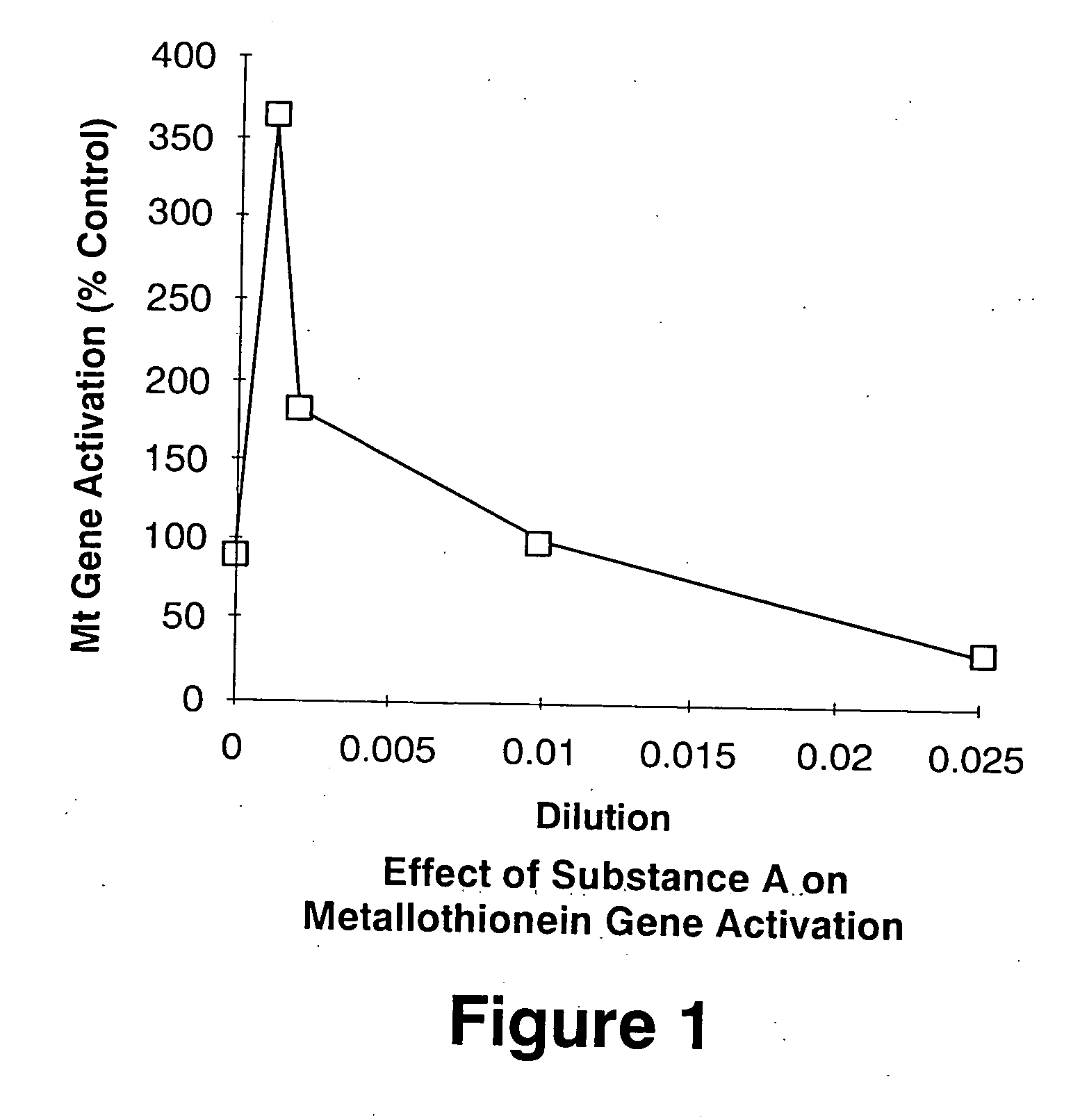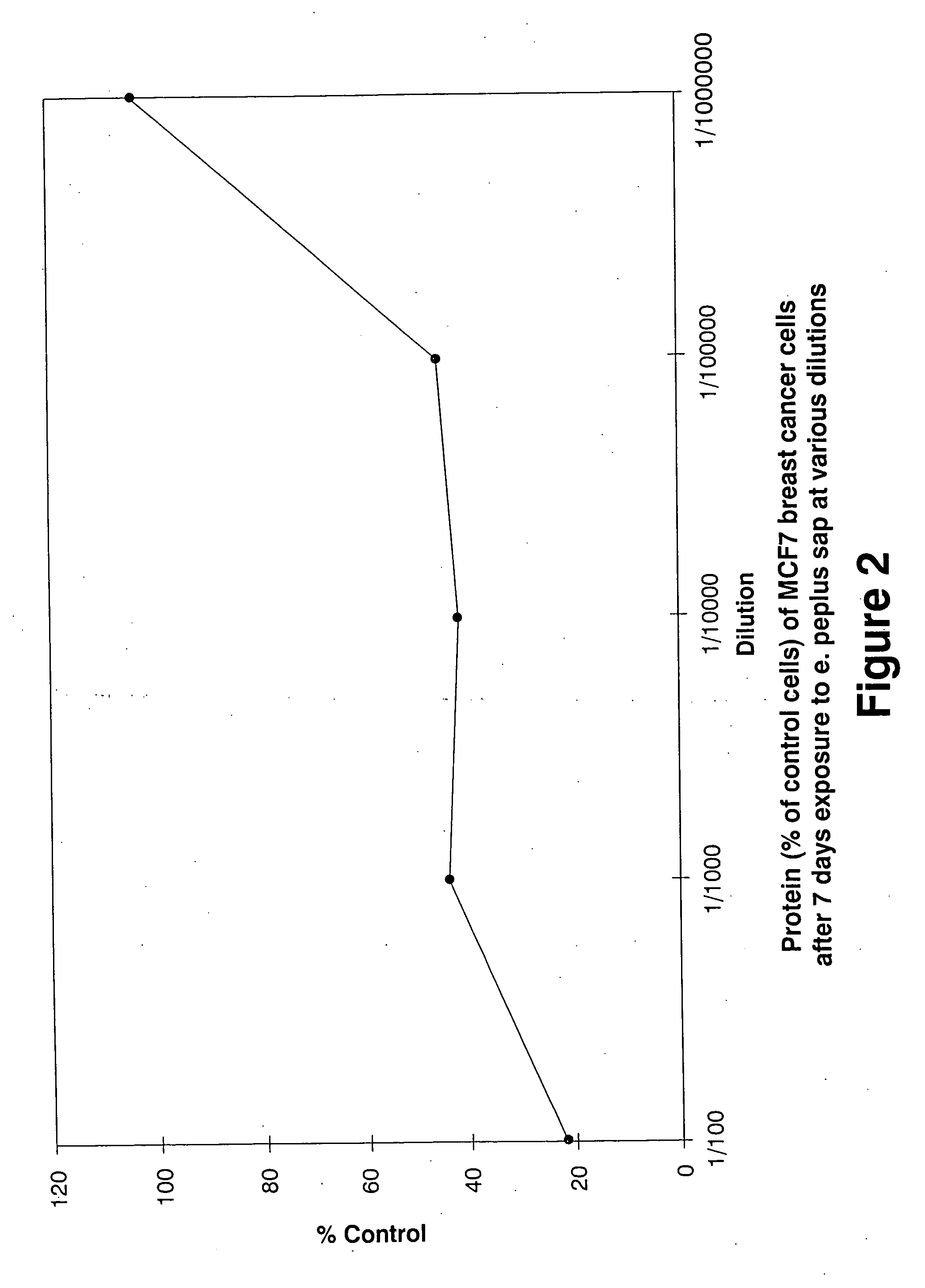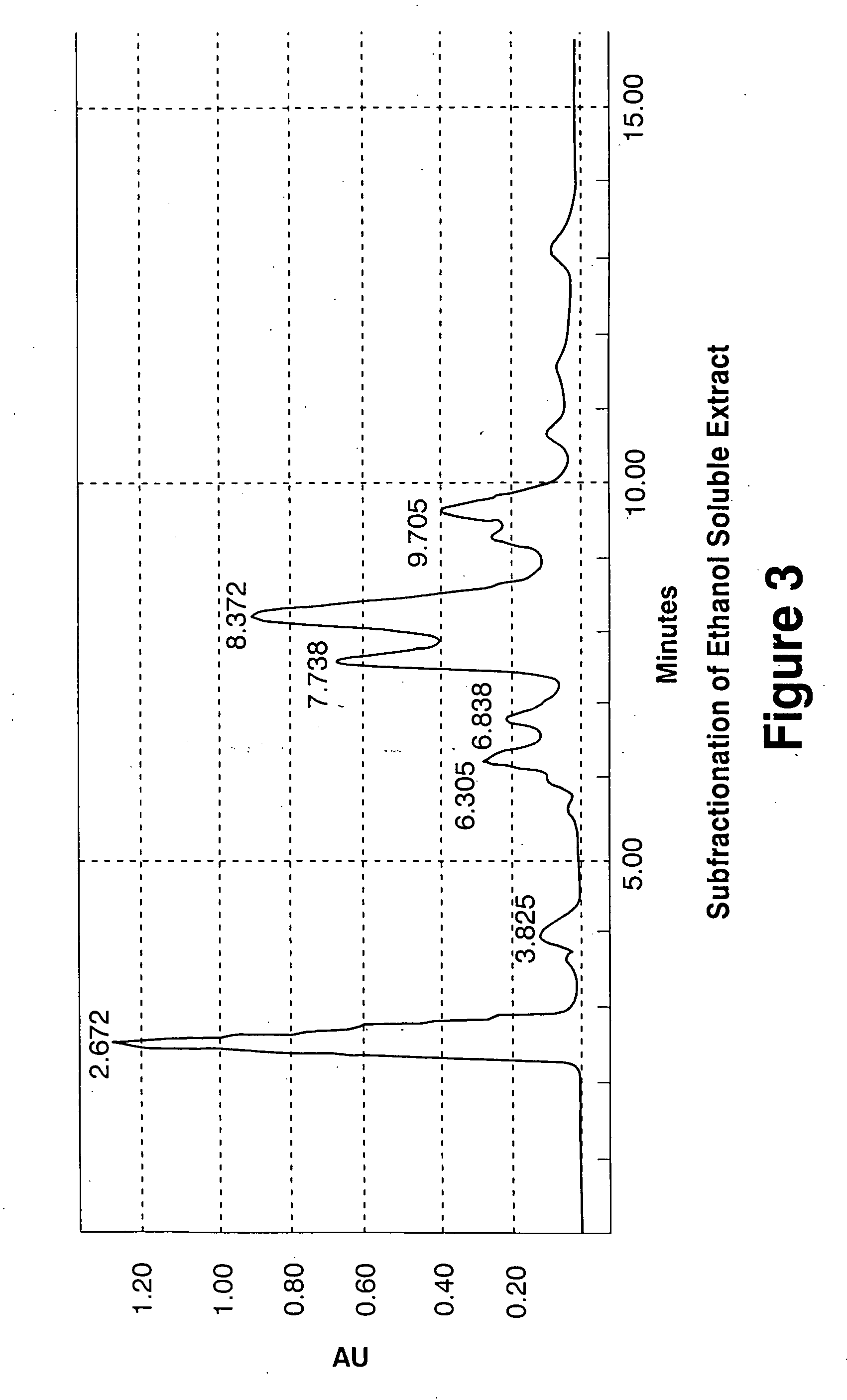Anti-cancer compounds
a technology of compounds and cancer, applied in the field of anticancer compounds, can solve the problems of high risk of recurrence, high risk of further disfigurement and scarring, and severe limitations of all present treatments
- Summary
- Abstract
- Description
- Claims
- Application Information
AI Technical Summary
Benefits of technology
Problems solved by technology
Method used
Image
Examples
example 1
Inhibitory Activity of Euphorbia Sap Against Tumour Cell Lines
[0072] The ability of sap of three Euphorbia species, Euphorbia peplus, Euphorbia hirta and Euphorbia drummondii to inhibit the growth of three different human tumour cell lines was tested. The activity against normal skin fibroblasts was tested as a control:
[0073] The cell lines were maintained in RPMI medium containing 5% foetal calf serum (FCS), and assays were performed in the same medium.
[0074] Sap was collected from plants growing randomly on cultivated soil on a farm at Palmwoods, in the Sunshine Coast hinterland, South-East Queensland. The plant stem surface was briefly washed with 70% ethanol, and scissors washed in ethanol were used to cut the stem and release the milky latex sap. The sap was collected into 10 ml sterile plastic centrifuge tubes, transported at 4° C. to Brisbane and stored frozen at −20° C. Prior to use, the sac was serially diluted five-fold up to 1 in 3125 into sterile 1.5 ml Eppendorf tube...
example 2
Effect of Heat or Acetone Trea Bent on Activity of Euphorbia Sap
[0086] The experiment described in Example 1 was repeated for E. peplus and E. hirta by a different person, using different cell line preparations, different plant samples and a different rating scale.
[0087] The samples were either prepared as described in Example 1, or were subjected to treatment with heat or acetone. Undiluted extracts of plant sap were heated at 95° C. for 15 minutes. For the acetone treatment, 40 μl extract was suspended in 400 μl acetone, and the tube shaken on a vortex mixer. Contents were centrifuged at 10,000 g for 3 minutes and the supernatant (acetone-soluble fraction) removed to a separate tube. Both the pellet and supernatant were left in open tubes at room temperature in the fume hood overnight with exhaust fan operating to evaporate the residual acetone.
[0088] The results are shown in Tables 7 to 9, in which +++ indicates no effect, and − indicates 100% cell death. “C” indicates that th...
example 3
Further Tests Using E. Peplus
[0092] Since E. peplus is the most abundant of the three plants tested in these studies, further experiments utilised extracts from this species. This is not to be taken to imply that activity is not present in the other two species.
[0093] Example 2 was repeated, using MM229 and MM220 human malignant melanoma cells and B16 mouse malignant melanoma cell lines, in addition to NFF and MM96L cells. Assays were performed in duplicate, using addition of an equivalent amount of water as a control, and dilutions of the pellet and supernatant fractions after acetone treatment from {fraction (1 / 20)} to {fraction (1 / 12500)}. The results are summarised in Table 10.
TABLE 10H2ODILUTIONSampleControl1 / 201 / 1001 / 5001 / 2,5001 / 12,5001 / 201 / 1001 / 5001 / 2,5001 / 12,500NFF pellet+++++++++++++++++ / ++++++++++++++NFF supernatant+++++++++++++++++++++++++++++MM96L pellet+++−++ / ++++++++−+++++++++++MM96L+++±++++++++−+++++++++supernatantHela pellet+++−+++ / ++++++−+++++++++++++Hela+++−±++...
PUM
| Property | Measurement | Unit |
|---|---|---|
| pharmaceutical composition | aaaaa | aaaaa |
| area | aaaaa | aaaaa |
| corrosive | aaaaa | aaaaa |
Abstract
Description
Claims
Application Information
 Login to View More
Login to View More - R&D
- Intellectual Property
- Life Sciences
- Materials
- Tech Scout
- Unparalleled Data Quality
- Higher Quality Content
- 60% Fewer Hallucinations
Browse by: Latest US Patents, China's latest patents, Technical Efficacy Thesaurus, Application Domain, Technology Topic, Popular Technical Reports.
© 2025 PatSnap. All rights reserved.Legal|Privacy policy|Modern Slavery Act Transparency Statement|Sitemap|About US| Contact US: help@patsnap.com



